Applying for HDB BTO can be nerve-wracking. Given the high demand and limited supply, competition is very intense. We always hear about people trying multiple times before they finally secure a queue number. So if you manage to secure a queue number, congrats! Now comes another stage that can be nerve-wracking as well. The HDB BTO flat selection.
HDB BTO flat selection: What to note before going down for the appointment
At this stage, HDB will invite you to go down to HDB based on your BTO queue number for the flat selection appointment to choose your preferred flat.
Here’s also when you pay the option fee, which is part of the downpayment. It is to be paid by NETS and depends on the flat type:
- 2-room Flexi: S$500
- 3-room: S$1,000
- 4-room and bigger: S$2,000
On top of that, you’ll need to bring along some documents, including the following:
- NRIC
- Birth certificates of your children (if you have kids and they’re listed in the application)
- Marriage certificate (if you’re married)
- Income documents
- HDB Loan Eligibility (HLE) letter if you’re applying for HDB loan
Click here for the full list of documents to bring along for the HDB BTO flat application.
If your queue number is small, you may be able to get your preferred flat. Otherwise, you’ll have to be prepared that someone else may have chosen your preferred flat. So don’t just fixate on one unit! A rule of thumb is to shortlist at least 10 units.
Before going down for the flat selection appointment, you’ll be able to go on the portal to see and monitor which flats are still available.
Shortlisting the stacks and units: Which ones to avoid?
The thing about buying a BTO flat is that, unlike buying a resale flat, you won’t be able to physically view the unit and see where it’s located in the development.
So you can only rely on things like the URA master plan and the development site plan.
On top of that, there’s the five-year MOP which requires you to live in the flat for five years before you can sell the house. So it’s even more important that you choose the right unit.
Besides rubbish chutes (for obvious reasons), these are the stacks and units you might want to avoid.
Those facing other high-rise developments
This is if you die die want to get an unblocked view. But it can be a bit hard these days BTOs are generally surrounded by other high-rise developments.
But if you really want to, the first step is to review the URA master plan and the site plan. Just visiting the site is not enough. The land plot next to the BTO may now be empty, but it might just become another BTO a few years later.
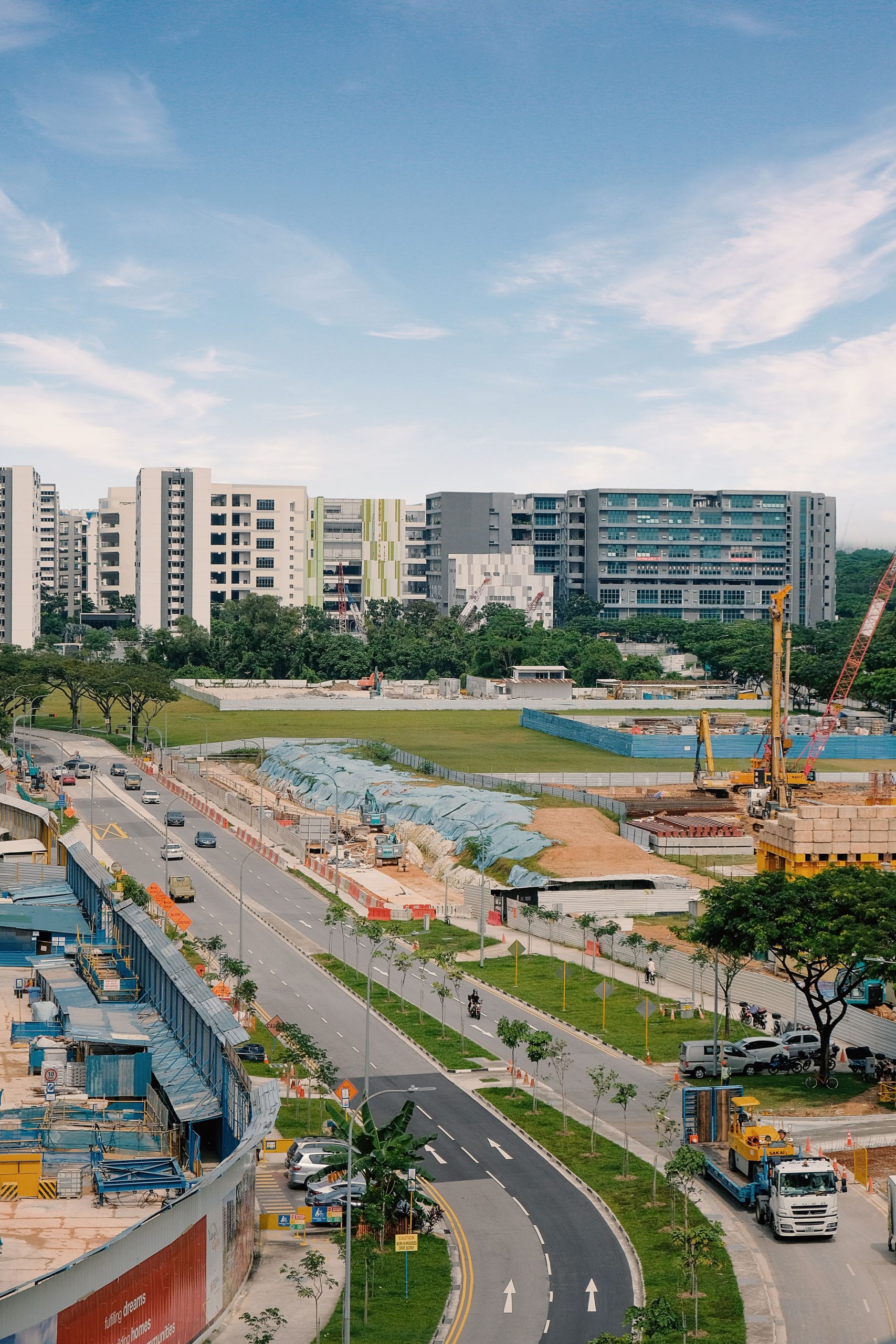
From the URA master plan, you’ll be able to see if there are any developments planned in future. For instance, you can see if your BTO is next to a plot that’s designated for a high-rise residential development. Residential plots are marked in orange on the plan, and can be designated for a BTO or condo.
It may be built in a few years’ time or 10 years’ time. Still, the key thing is that there will be construction nearby, which means you’ll have to tahan the noise and dust.
Another thing to look out for is the number on the plot, which signifies the gross plot ratio. Basically, it represents how dense the development on the land parcel can be built.
Let’s take a look at Parc Flora BTO in Tengah, which was launched in the Feb 2022 BTO. According to the URA map, there are residential plots with similar gross plot ratios at the east (Parc Woods BTO), south (Garden Vines BTO), south-west and west of the BTO. So developments here will likely have similar heights.
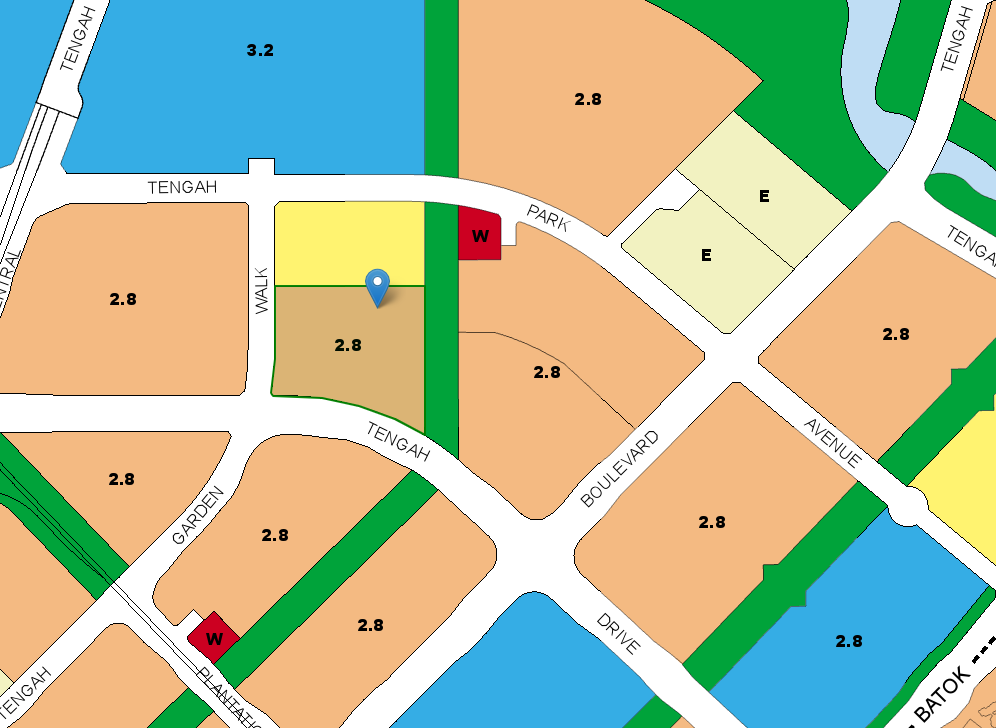
Let’s get a closer look at the Parc Flora site plan. It states that the plot at the west is for future high-rise residential. And at the north, the land parcel is reserved for high-rise development, although currently we can’t tell from both the URA master plan and site plan what it will be.
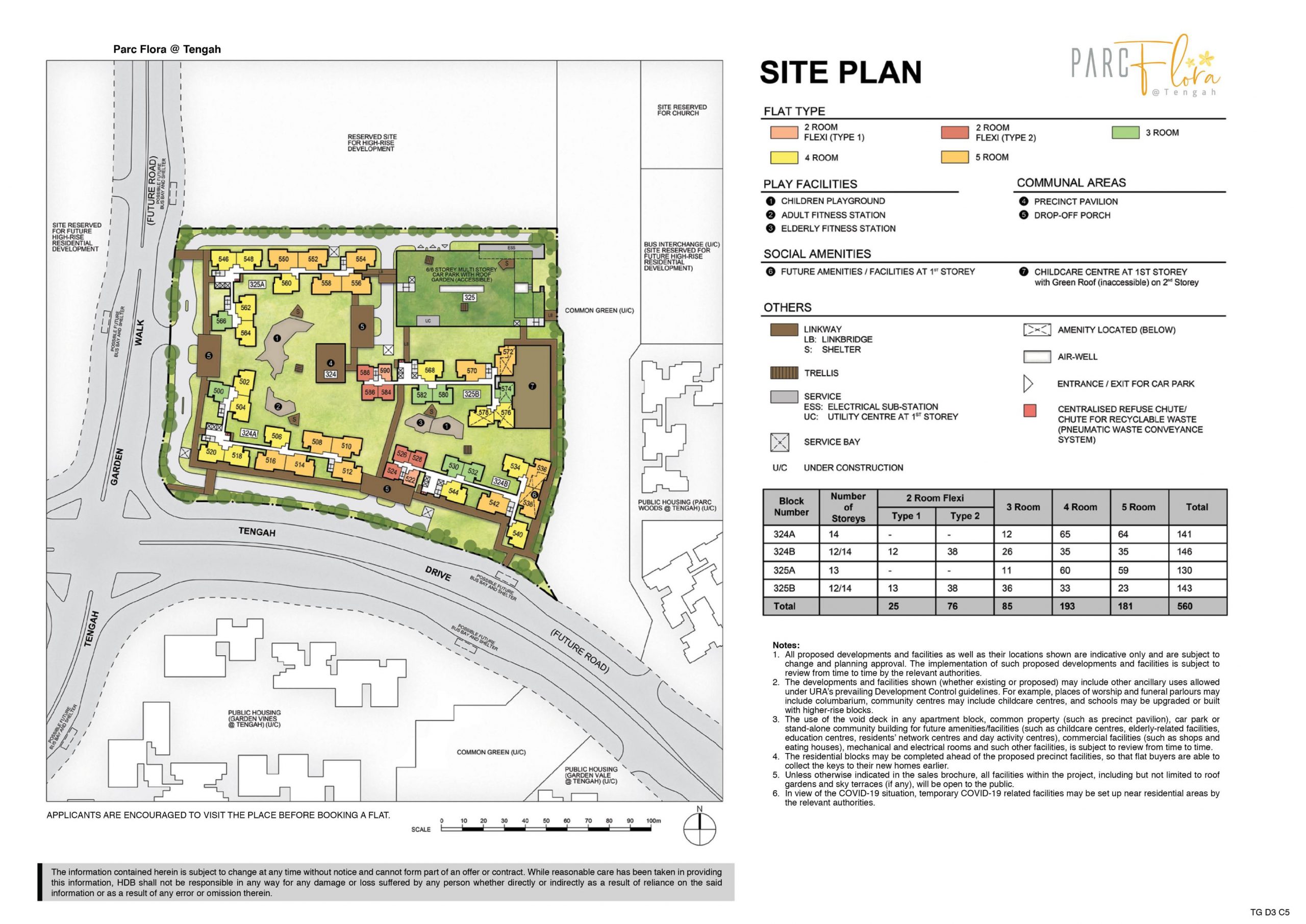
Using Parc Flora as an example, if you want to avoid views of other BTOs, our suggestion is to avoid stacks 566, 500, 520, 518, 516, 514, 512, 524, 522, 544, 542, 540 and 536.
West-facing units
Sure, having the afternoon sun directly facing your flat means your laundry will dry faster. This is especially useful if you don’t have a dryer, as well as during rainy seasons (like in December) when your laundry takes longer to dry.
But with Singapore being so hot, do you really need to have the sun directly facing your windows?
Since the afternoon sun is in the west, it’s best to avoid west-facing units. Make sure your windows don’t face the west.
That’s why the ideal units are those with a north-south orientation as they don’t get direct sunlight. So it’s best to go for those.
To get a better idea of the sun direction in relation to the flat, you can also use the sun calculator.
Those facing main roads
Living in one of these units can get very noisy and dusty, especially if it’s facing the expressway.
If it’s any consolation, the good thing is that for BTOs next to an expressway, the multi-storey car park will be located between the expressway and the residential blocks. This helps to buffer the sound, like what we’ve seen in the site plan for Plantation Creek BTO in Tengah.
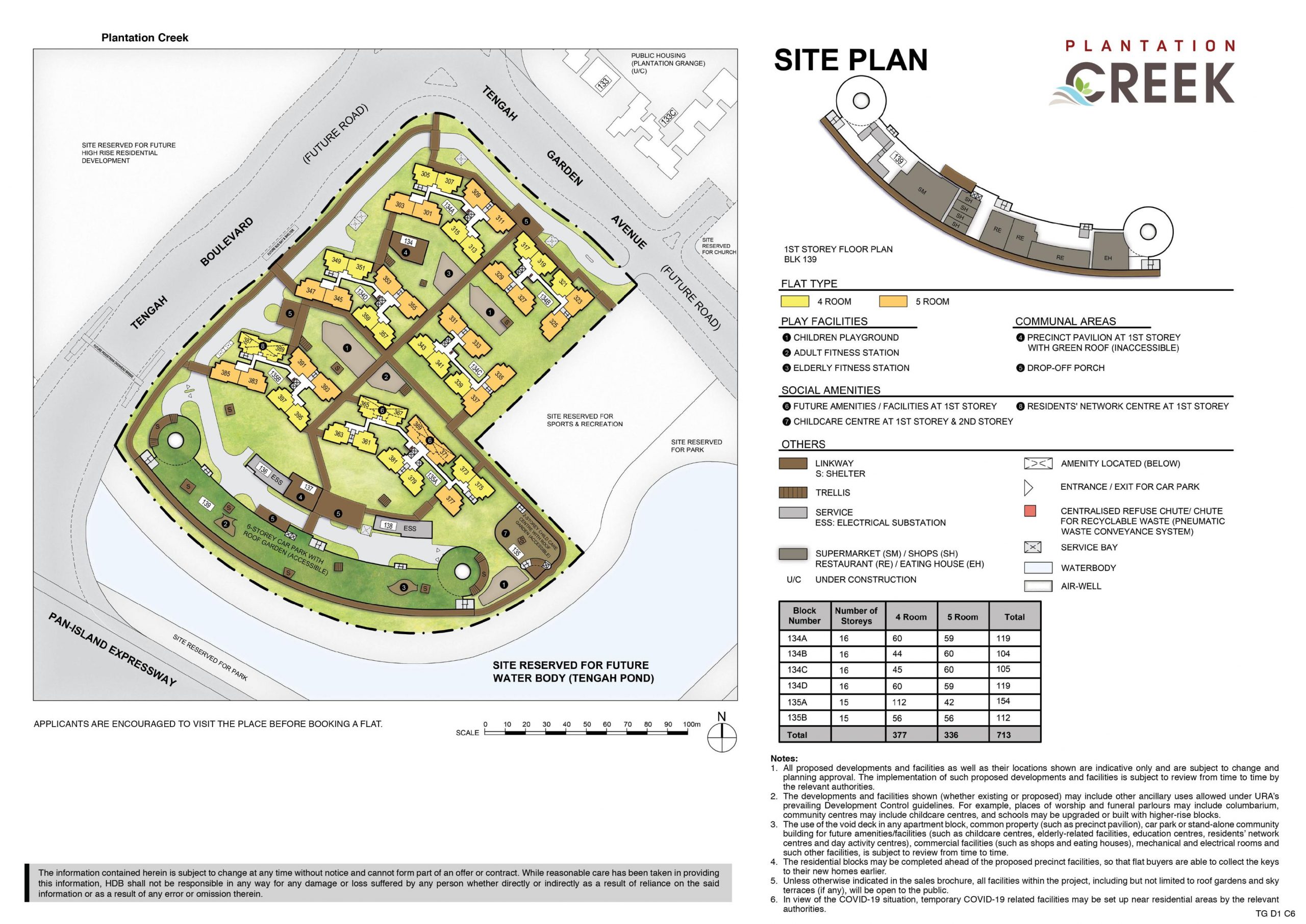
Still, noise travels upwards, so it may still be noisy even if your flat is on a high floor.
Units near multi-storey car parks (MSCP) and roof gardens
Staying near the car park can mean convenience, especially if you’re driving. You don’t need to walk a long distance to and from your car.
But it can get very noisy due to tyre noises and the sound of the car doors opening and closing.
You might also want to stay away from units facing the MSCP. There have been complaints that people at the car park can see through the units (such as this one on Hardwarezone).
Using Yishun Boardwalk BTO as an example, stacks 615, 617, 707 and 709 directly face the 7-storey MCSP. So we suggest that you avoid units of at least up to the 8th floor in these stacks.
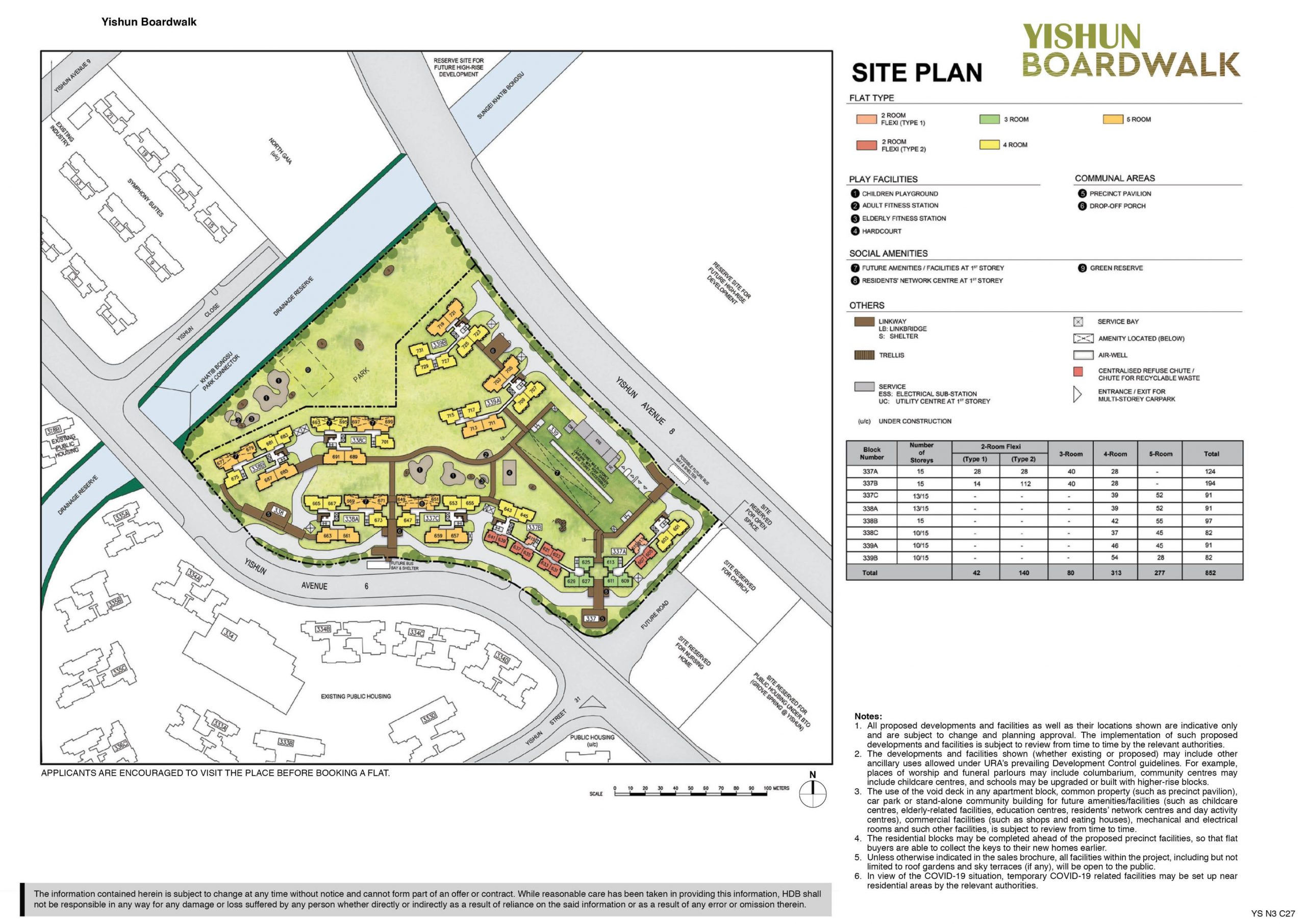
Adding on to the privacy concerns, you may also want to avoid units at the same level as the roof garden. In the case of Yishun Boardwalk, it’s on the 8th floor. Since the roof garden is publicly accessible, it can get pretty noisy with people gathering there. People may also be able to see through the units, although MND has said that there are plants put in place to “address privacy concerns of the residents”.
Those facing too close to other stacks
Here’s another thing to take note. Since BTOs are generally very dense, a lot of the stacks are very close to each other, especially the inner stacks.
Like what we’ve seen for stacks 703 and 725 of Yishun Boardwalk. Not only do the windows of the units here face each other, but the distance is also very close. According to the site plan, the estimated distance between the two stacks is less than 30 metres.
This also means that if you snag a flat at one of these stacks, and can see your neighbour’s living room, chances are your neighbour can see into yours as well. So you’ll need to install some good curtains to block out the view.
Do you have any other tips to share about the BTO flat selection process? Let us know in the comments section below or on our Facebook post.
If you found this article helpful, 99.co recommends Operator-run HDB rental scheme for joint singles – take it or leave it? and Renovation contractor embroiled in multiple scams, accused of sex scam on Facebook.
Looking for a property? Find the home of your dreams today on Singapore’s fastest-growing property portal 99.co! If you would like to estimate the potential value of your property, check out 99.co’s Property Value Tool for free. Also, don’t forget to join our Facebook community page or Telegram chat group! Meanwhile, if you have an interesting property-related story to share with us, drop us a message here — and we’ll review it and get back to you.
The post Which stacks should you avoid for your HDB BTO flat selection? appeared first on 99.co.


